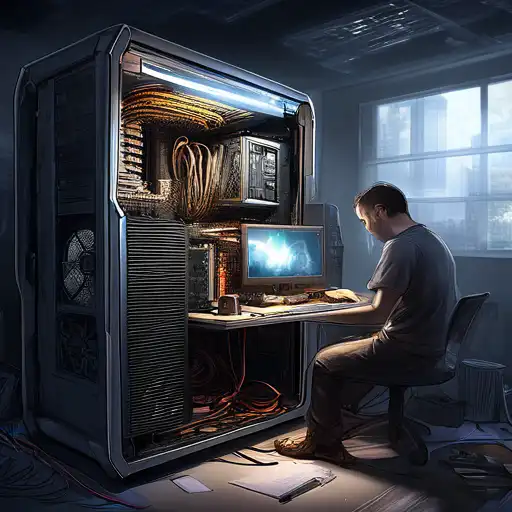Introduction to PC Building
Building your own PC can be a rewarding experience, offering both personal satisfaction and the opportunity to create a machine that perfectly fits your needs. Whether you're a gamer, a content creator, or just someone looking for a custom computing solution, this guide will walk you through the basics of assembling your own computer.
Why Build Your Own PC?
There are several advantages to building your own PC, including cost savings, the ability to customize every component, and the satisfaction of assembling something with your own hands. Plus, you'll gain a deeper understanding of how computers work.
Essential Components for Your Build
Before you start, you'll need to gather all the necessary components. Here's a list of the essential parts:
- Processor (CPU)
- Motherboard
- Memory (RAM)
- Storage (SSD or HDD)
- Power Supply (PSU)
- Case
- Graphics Card (GPU) - if not integrated into the CPU
Choosing the Right Parts
Selecting compatible components is crucial. Research each part to ensure they work well together. Consider your budget and what you'll be using the PC for. For gaming, invest in a powerful GPU. For general use, you might prioritize a faster CPU and more RAM.
Step-by-Step Assembly Guide
Once you have all your parts, it's time to start building. Follow these steps:
- Prepare your workspace with a clean, static-free surface.
- Install the CPU onto the motherboard carefully, aligning the pins correctly.
- Add the RAM to the designated slots on the motherboard.
- Mount the motherboard inside the case.
- Install the power supply and connect it to the motherboard and other components.
- Add your storage devices and connect them to the motherboard and power supply.
- If you're using a dedicated GPU, install it into the appropriate slot on the motherboard.
- Connect all necessary cables, including those for the front panel USB and audio ports.
- Double-check all connections before powering on your new PC.
Installing the Operating System
After assembling your PC, you'll need to install an operating system. Whether you choose Windows, Linux, or another OS, ensure you have a bootable USB drive or DVD ready. Follow the on-screen instructions to complete the installation.
Tips for First-Time Builders
Building a PC can seem daunting, but here are some tips to make the process smoother:
- Watch tutorial videos to familiarize yourself with the process.
- Take your time and don't force components into place.
- Keep track of screws and small parts.
- Test your PC outside the case first to ensure all components work.
Conclusion
Building your own PC is an achievable project for beginners, offering numerous benefits over buying a pre-built system. With the right preparation and patience, you can create a custom computer that meets your exact needs. For more tech guides and tips, check out our other articles on tech guides and DIY projects.
